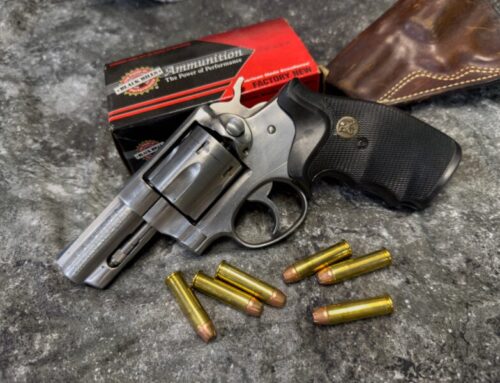
The Glock 19 (top) uses a tilting barrel short recoil system while the Beretta PX4 Storm (bottom) uses a rotary locking system.
What is a rotary action pistol, you may ask? And do I need one? Well, just to make sure we are all on the same page, let’s consider what they are. In the world of rifles, where a bolt locks into a barrel or barrel extension, a “rotational” locking mechanism is a common thing. Lugs on the bolt move past other lugs in the chamber, and when rotated, the bolt is firmly locked into the chamber because the lugs can’t move past each other. To separate the two, something has to rotate the bolt to unlock the lugs. Depending on the design, either manual operation or gas pressure unlocks the bolt.
Pistols are a bit different. While a rifle barrel and chamber are (generally) stationary, and just the bolt moves backward to extract a case and load a new cartridge, a pistol barrel (generally) recoils backward a bit along with the “bolt.” Of course in a pistol, it’s not really a called a bolt, but a slide that has a breech face machined into it, so it serves a similar purpose. You might think of a semi-automatic pistol slide kind of like a combination bolt and bolt carrier.
A semi-automatic pistol operates because of a carefully choreographed balance of time and motion. The barrel and slide lock together to create a sealed chamber. After the shot is fired, this chamber stays closed until the conflagration inside chills out a bit, and pressure falls to manageable levels. If the slide and barrel separated at the instant of ignition, you would have all the chaos of a muzzle blast except it would be right around your face and hands, coming out the back of the barrel instead of the muzzle. So, the slide and barrel need to be locked together as the cartridge ignites to keep the chamber sealed. As pressure drops, they can separate so the process of extraction and loading can begin.

Many semi-automatic pistols, like this Glock 19, lock via fit between a square portion of the barrel hood and the ejection port.
The solution that makes a semi-automatic pistol work is a delayed action, where the slide and barrel remain locked together for a fraction of a second. After that, the slide and barrel can unlock and separate safely. Just as with our rifle example at the beginning of this article, the pistol barrel and slide lock together with lugs machined into the barrel and slide. Depending on the “design” of the unlocking mechanism, the barrel may either unlock from the slide by tilting out of alignment, or, in the case we’re going to talk about today, by rotating like a rifle bolt.
Read the rest at GunsAmerica.








Leave A Comment